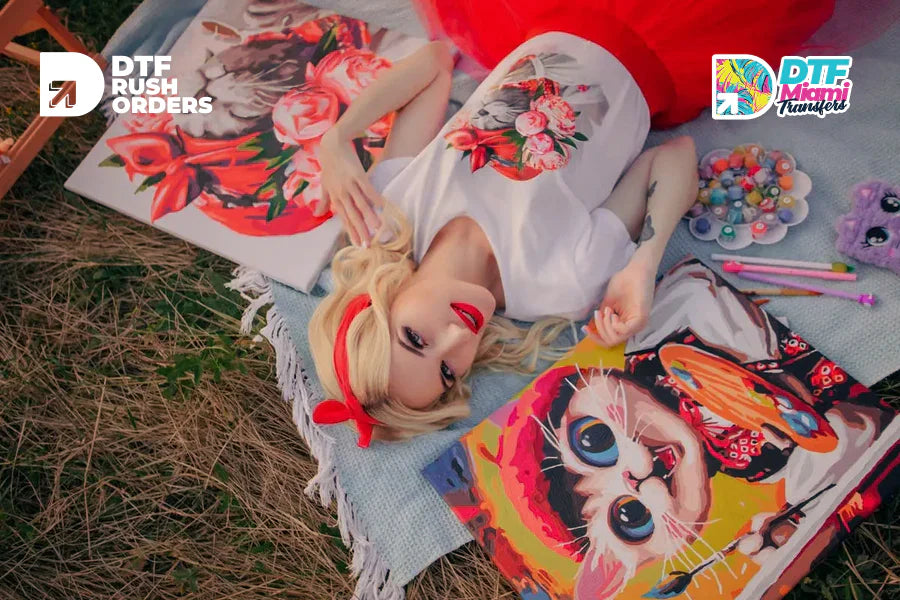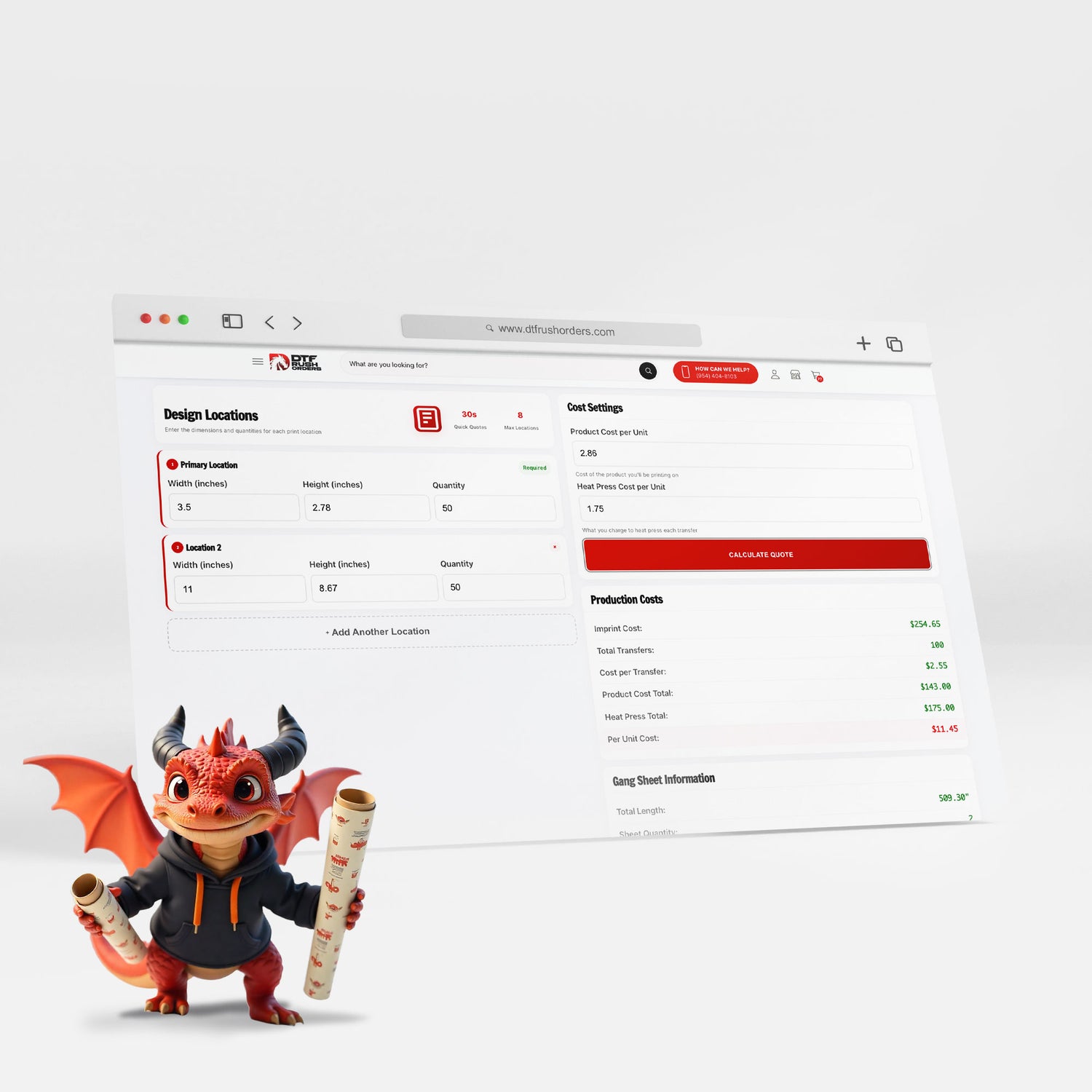
Maximizing Efficiency: Tips for Fast Turnarounds with DTF Printing Services
Introduction to DTF Printing Services: What Are They?
DTF stands for Direct to Film. It’s a printing method shaking up the way we think about custom apparel and product decoration. Unlike traditional printing techniques that print directly onto the material, DTF prints onto a special film first. After printing, this film is transferred onto the fabric using heat and pressure. It’s a game-changer because it works on any color fabric and different types of materials, not just cotton or polyester. What really sets DTF apart is its versatility and the quality it delivers. The colors pop, the details are sharp, and the final product can withstand washes without fading quickly. Whether you’re running a small business or just looking to create custom gear, understanding DTF can open up a world of possibilities. It’s fast, efficient, and the results are consistently impressive.

Understanding the Importance of Efficiency in DTF Printing
Efficiency in DTF (Direct to Film) printing isn’t just important; it’s critical. Why? Simple. It saves time and money, and in the printing business, that translates directly to higher profits and happier customers. Think of it like this: the faster you can move from design to print to press, the more orders you can fulfill. And more orders mean a healthier bottom line. But efficiency isn’t just about speed. It’s also about quality. A fast turnaround loses its charm if the final product isn’t up to scratch. So, efficient DTF printing involves a delicate balance—maximizing speed without compromising on the quality of the prints. This means having a well-oiled process, from artwork preparation to the final press, where every step is optimized for quick execution. In essence, mastering efficiency in DTF printing is about making smart choices at every stage to ensure you’re delivering the best possible product in the least amount of time. And that, ultimately, is what sets the best apart from the rest.
Key Factors Affecting Turnaround Times in DTF Printing
When it comes to DTF printing, several key factors play a big role in how fast you can get your prints. Understanding these can help you plan better and avoid delays. First off, the design complexity matters. Simple designs are quicker to print than more complicated ones. It’s like comparing a sprint to a marathon; the simpler, the faster. Then, there’s the print quantity. Printing a few pieces will obviously be quicker than running off hundreds. It’s about how much you’re asking the printer to handle at once. Next, consider the ink and material availability. If your printer has to wait for specific inks or fabrics, it’s going to slow things down. Make sure everything’s on hand before starting. Automation also impacts speed. Printers with automated systems work faster than those doing everything manually. It’s the difference between using a high-speed train and riding a bike. Lastly, the current workload of your printing service matters. If they’re swamped, your job will take longer. It’s like being in line at a busy coffee shop. Knowing these factors can help you work smarter with your DTF printing service for faster turnarounds.
Top Tips for Preparing Your Designs for DTF Printing
When it comes to DTF printing, starting with a well-prepared design can save you a ton of time and hassle. First up, always work with high-resolution images. This ensures your designs come out crisp and clear, not blurry or pixelated. Stick to 300 DPI or higher for the best results. Next, consider your color choices carefully. DTF printers can produce a wide range of colors, but to get the most vibrant results, design in CMYK color mode rather than RGB. This matches the printing process better and translates to more accurate colors in your prints. Also, simplify your designs if possible. Complex designs with lots of fine details are harder to print and can slow down the process. Aim for clean, bold lines to make your design stand out. Lastly, check your artwork thoroughly before sending it off for printing. Look out for any errors or areas that might not translate well onto fabric. A quick review now can prevent a lot of wasted time redoing designs later. Stick to these tips, and you’ll set yourself up for faster, smoother DTF printing projects.
Choosing the Right DTF Printing Services for Speedy Results
When you’re all about speed, picking the right Direct to Film (DTF) printing services makes all the difference. You want a service that shouts efficiency from the rooftop. Here’s the deal—speed doesn’t mean rushing and messing it all up. It means smart choices. First, look for a DTF service with a rep for quick turnarounds. If they’re known for getting prints out the door fast, you’re in the right alley. Ask about their average completion times, and don’t shy away from checking out reviews or asking for references. Next, gear matters. Make sure they use top-notch printers and drying tech that’s built for speed without skimping on quality. Also, check if they’re comfortable with your volume. A small shop might be lightning fast for a few items but could stumble if you drop a large order on them. Lastly, clear communication is your best friend. A service that gets what you need, when you need it, without playing a guessing game, will keep those print jobs flying out with precision and speed. Keep it straightforward, and you’ll land a DTF printing service that makes efficiency its middle name.
The Role of Quality Materials in Fast Turnarounds
Using high-quality materials is key to speeding up DTF (Direct to Film) printing services. Think about it—better materials mean fewer reprints and tweaks. You get it right the first time, which saves a ton of time. For example, top-quality transfer films and inks make a huge difference. They ensure that designs transfer smoothly and last longer on the fabric. This isn’t just about looking good but being efficient. Also, high-grade printing sheets reduce the chances of jams or errors in the printer, keeping things moving fast. So, investing in quality materials might seem pricier upfront, but it pays off by cutting down on delays and boosting your turnaround speed. Remember, in DTF printing, quality materials aren’t just a choice; they’re a necessity for speed.
Streamlining the Printing Process: A Step-by-Step Guide
To speed up your Direct to Film (DTF) printing services, streamline the process with these steps. First, always ensure your designs are ready and optimized for printing. This means choosing the right file type and resolution to prevent any delays. Second, regular maintenance of your DTF printer is a must. Keep it clean and well-tuned to avoid breakdowns that slow you down. Third, manage your ink and materials inventory efficiently. Running out in the middle of a job isn’t just inconvenient, it’s a bottleneck. Fourth, train your team. Everyone involved should know their role inside out to keep things moving smoothly. Lastly, embrace software solutions for automation wherever possible. From tracking orders to preparing designs, the right tools can cut down on manual tasks and speed up the entire process. Stick to this guide, and you’ll see faster turnarounds without sacrificing quality.
Troubleshooting Common DTF Printing Issues Quickly
To keep your DTF printing service running smoothly, you’ve got to tackle issues head-on and fast. Some common headaches include ink not sticking, colors looking faded, or prints just not coming out right. Let’s break down how to fix these quickly. If your ink isn’t sticking, check your pretreatment process. Sometimes, it’s as simple as adjusting the application or making sure the material is correctly prepped. For faded colors, double-check your ink levels and the printer’s color profile settings. Often, a quick adjustment there can bring your prints back to life. If prints are coming out wrong, make sure your software settings match the material you’re printing on. It’s easy to overlook, but this sync up can save loads of time. Keep these points in your pocket, and you’ll dodge major slowdowns in your DTF printing workflow.
Keeping Communication Clear with Your DTF Printing Provider
When dealing with DTF printing services, keeping clear communication is your key to a fast and satisfying job. First, be straightforward about what you want. Describe your design, colors, and any specific details like font or image resolution right from the start. This way, you avoid back-and-forth emails that can slow things down. Second, discuss deadlines early. If you need it done fast, say so upfront. This helps the printing provider plan better and prioritize your work if possible. Finally, be open to suggestions. These folks know their craft. If they suggest a different material or a tweak in design for better results or efficiency, listen. It’s a two-way street—clarity and flexibility can speed up the process and lead to better outcomes.
Summary: Maximizing Efficiency in DTF Printing Projects
To boost efficiency in DTF (Direct to Film) printing projects, start by streamlining your design process. This means selecting and finalizing designs before they hit the print queue to avoid delays. It’s crucial to use high-quality images and graphics for crisp, clear prints. Remember, the better the input, the better the output. Organizing your workflow is another key step. Prioritize tasks and arrange them to minimize downtime between processes. This could involve prepping multiple designs for printing while a batch is already running. Maintenance of your DTF printer plays a huge part in avoiding unexpected hiccups. Regular check-ups and prompt replacement of consumables keep the machine running smoothly. Lastly, consider batch processing. Print similar designs together to reduce the need for frequent changes in settings or materials, saving time and resources. Efficiency in DTF printing isn’t just about speed; it’s about smart planning and execution to ensure quality and reduce wastage.



